
Marielos Carrillo returns from the backyard to the kitchen of her house in the La Virginia neighborhood with her hands full of leaves and puts a creamy plant called chicasquil down with the other ingredients.
As if she had a television show, she distributes everything she needs to prepare her dish on a metal table and starts to tell the story of how and when she learned about ayaco, a type of stew that often used to be cooked in Nicoya many years ago for weddings and 15th birthday parties.
Now, she is trying to bring it back to Nicoyan kitchens.
“I learned the recipe in the house of Briceño Rosales in 1975. My husband is the grandson of Recaredo Briceño (name that now adorns the Nicoya park) and this dish was a tradition for more than 100 years in the family,” Miss Marielos says.
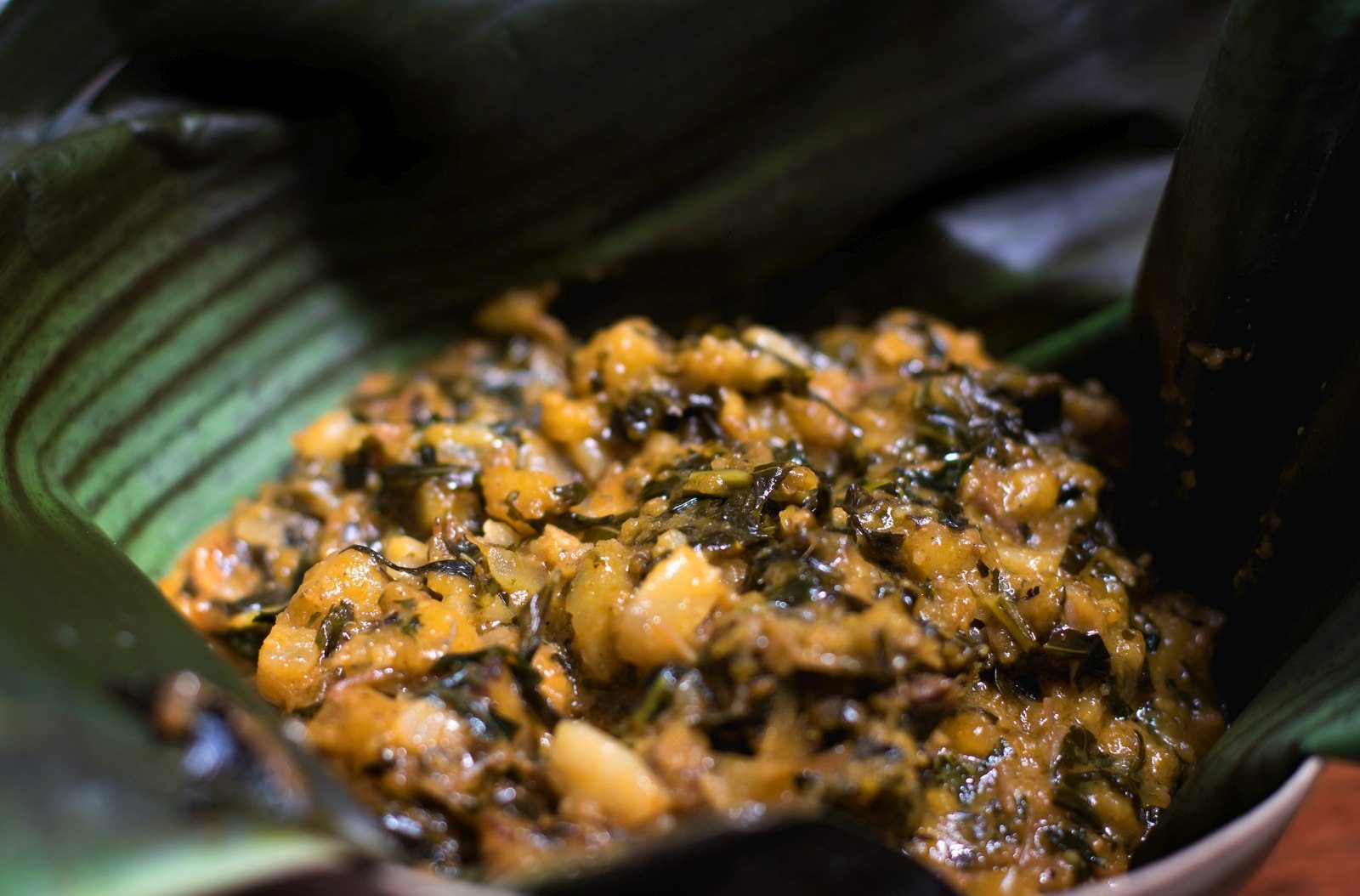
[video:https://www.youtube.com/watch?v=D30eDR5VCHU&feature=youtu.be width:500 align:center autoplay:0]Everything was very ceremonious. We used many plants, meats and vegetables and everyone got really involved in the preparation. The house used to fill up with excitement.”
The ingredients for ayaco, if you look one by one, seem like the ingredients necessary for three different dishes, or enough for you to defy logic. But the fusion of the beef broth, achiote, dough, bacon, fried plantain, milk, beef shank, garlic, cilantro and the essential leaves of the chicasquil plant start to blend and take shape with each bubble and movement of Miss Marielos’s spoon. She says that it must be cooked over low heat so all the flavors mix properly.
Rescuing chicasquil
Chicasquil, a dull-looking bush with large leaves, is the star of this dish. While it has many nutrients, it would have completely disappeared from the Costa Rican kitchen because of deforestation, urbanization and general lack of awareness if it weren’t for indigenous people and farmers that still use it in their recipes.
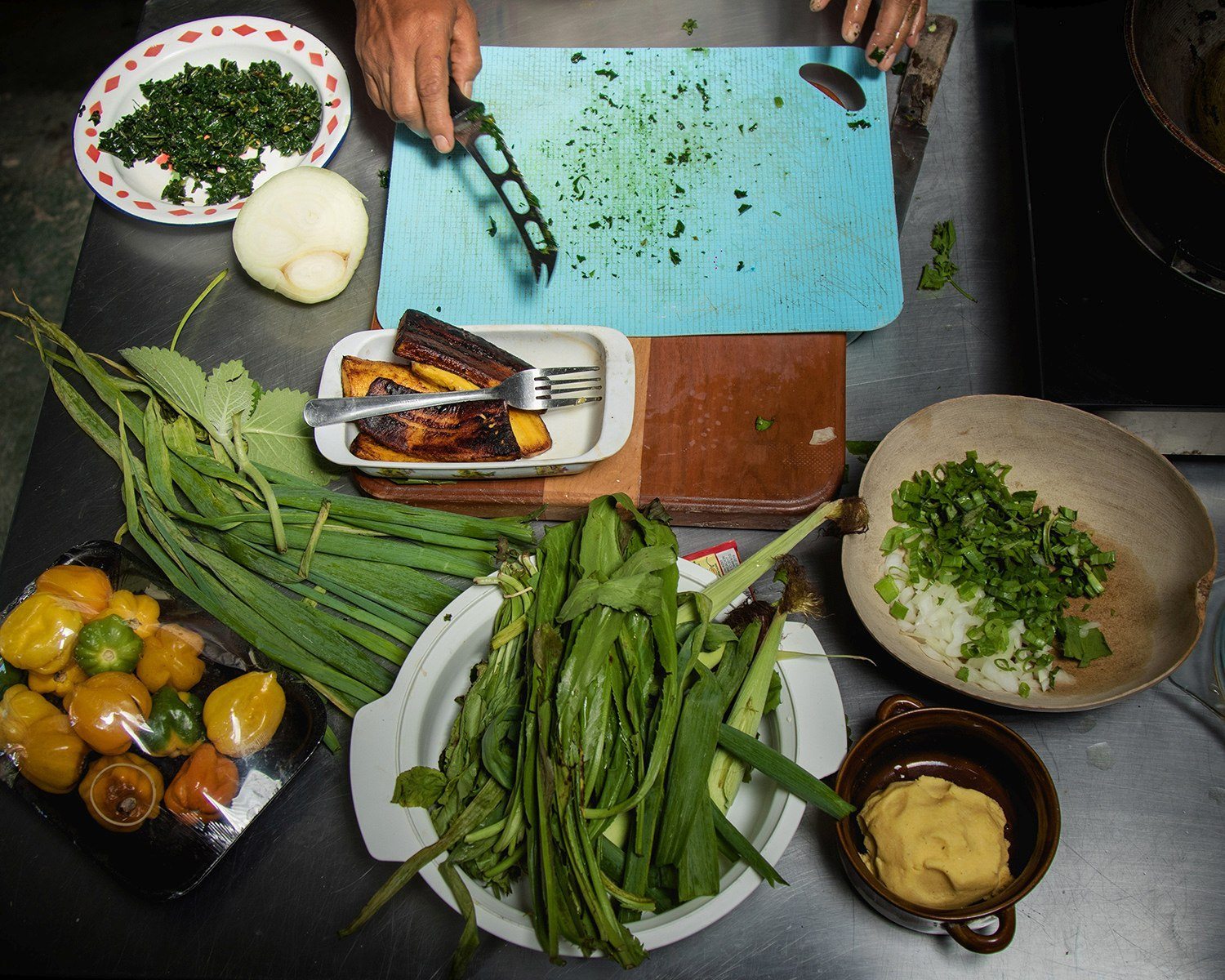
Now, Marielos brings in the leaves from the three bushes she has in the backyard just like her mother used to do in Hojancha and her Chorotegan grandmother in Matambú. It used to be very easy to find them because they were used to build fences and divide lots. But a year ago, when she looked for this ingredient for the first Traditional Nicoyan Food Fair she couldn’t find it anywhere and she was forced to go all the way to Pavas to “some cliffs in Cartago” in order to get it.
“The plant has been disappearing,” she says. “I am bringing it back again to make people aware that we should plant it and make this recipe that many people remember with yearning.”
On the way to Mansión she planted more than 100 bushes on land that she was loaned and she has been giving them out to her family members and closest friends.
“My goal is for every family to have one of these bushes at their houses so that they can eat well,” Marielos says as she serves the ayaco over a plantain leaf inside a calabash bowl. “And plant chicasquil, because without chicasquil there is no ayaco!”
Miss Fidelina: Every Sunday is July 25
After fine-tuning a few final details in her kitchen, Fidelina Rosales sits down at the table to chat. When she starts to say her full name, her sister interrupts her from the stove screaming her nickname. Fidelina’s dusty cheeks covered in flour curl up into a smile and she corrects herself. “Everyone knows me as The Fatty.”
[video:https://www.youtube.com/watch?v=c1WyQI29B-I&feature=youtu.be width:500 align:center autoplay:0]She woke up at 5:45 a. m. to start to make lunch that customers buy religiously at her house every Sunday. Sometimes she sells out before noon. The menu is always the same: meatball soup, hen al achiote, and rice with chicken. But twice a month she makes corn rice, a Guanacastecan recipe that requires a lot of work and that The Fatty cooks so that it is on the table every month of the year and isn’t served just during the July 25 festivities and independence day.
“Here, very few people cook corn rice. I have customers that come from San Jose to buy it and they take it back in coolers,” says The Fatty, who has been cooking since age 14 and learned some 20 years ago how to make this dish in a group of women entrepreneurs in Santa Cruz. But she remembers that her mother and grandmother also used to make it.
Fatty tells her sister “Pachita” Rosales that the stove is smoking, tells her daughter to turn the stove off and her grandson to pay the suppliers, all while she answers the phone to take orders and explains how to make the recipe.
Corn rice has three kilograms (6.6 pounds) of corn, one hen per each kilo “so that it’s very tasty,” cilantro, chile peppers, onion, and a little bit of complete seasoning that, according to The Fatty, “is what gives its feeling.” It is served with quartered plantains.
“This is what the Chorotegans from Matambú used to eat,” she says as she lowers her tone of voice, as if it was a secret or she had to share the profits from the 40 boxes of corn rice that she sells on Thursdays every 15 days and that, many times, doesn’t have enough left over to try.
The Fatty knows the importance of cooking in Nicoyan folklore and also knows that during Christmas and New Year’s many hours at the stove await her.
I really like working. I don’t do this for necessity, but for tradition… For tradition,” Fidelina says emphatically.
She and Marielos agree that in order to keep this flame alive it’s not enough to have an annual food fair. These dishes have to be brought back, little by little, to Guanacastecan tables.
If you want to try these delicious recipes and many others you can call the following phone numbers:
Ayaco
Marielos Carrillo
Phone: 8678-5227
Corn rice
The Fatty
Phone: 2686-4273
Through this story, The Voice of Guanacaste seeks to promote the work of these Nicoyan woman, but if you have enough confidence the steps to make this recipe are the following:
Ayaco
Ingredients
- 14 oz. of chicasquil leaves
- 8.8 oz. of beef shank
- 8.8 oz. of pork
- 8.8 oz. of pork bacon
- 5.2 oz. of cornmeal
- Beef broth
- 1 ripe plantain
- 5 large tablespoons of panela (unrefined sugar cane)
- 1 onion
- 1 head of garlic
- 1 bunch of coyote cilantro
- 1 bunch of coriander
- 1 glass of milk
- 1 small teaspoon of complete seasoning
- Achiote
- Oregano
- Salt and Pepper
- ½ a Chile
- 1 grated potato
Preparation:
1. Boil the chicasquil leaves for 20 minutes to eliminate a toxin in the plant
2. Cook the three types of meat in a pot with the vegetables and set them aside with the stock they produce
3. Slice the plantain into slices and fry them in a skillet. When they are done, cut them into small cubes.
4. Finely chop the spices and vegetables and grate the panela.
5. In a pot on low heat, add all the beef broth with achiote and cornmeal so it starts to dissolve, then add the rest of the ingredientes and start to slowly stir until the mix thickens.
6. When the ayoca has a creamy texture, turn it off. Serve it with tortilla and you’re done!
Corn Rice
- 1 large hen
- 2.2 lbs of corn kernel
- 1 bunch of cilantro
- 1 chile pepper
- 1 celery stalk
- Complete seasoning
- 1 head of garlic
- Achiote
- Chicken broth
-
Wash the corn well to remove the shell “because it’s embarrassing when people get it stuck in their teeth,” says Miss Fidelina.
-
Cook the hen with the vegetables until it is soft and set it aside with the stock.
-
In a pot, add the chicken broth, achiote and the corn kernels and cook it on medium heat for an hour. Add water constantly so it doesn’t dry out.
-
Five minutes before turning the heat off, add the spiced hen that you previously cooked, the chopped vegetables and the complete seasoning.
-
When the corn rice is soft and creamy it can be served with a hard boiled egg and cubed plantain.


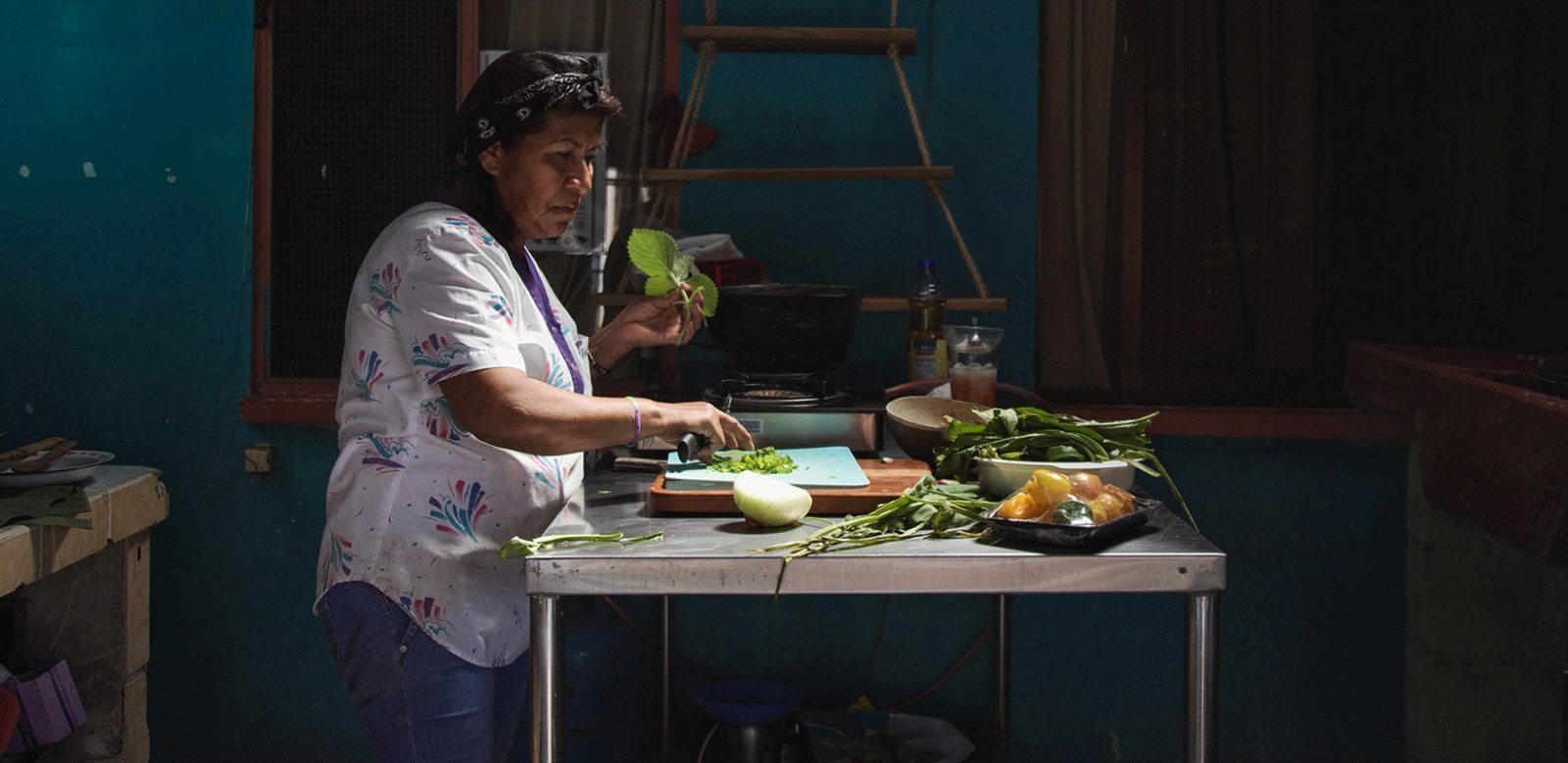
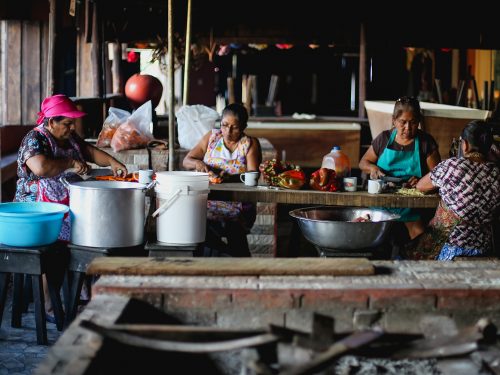
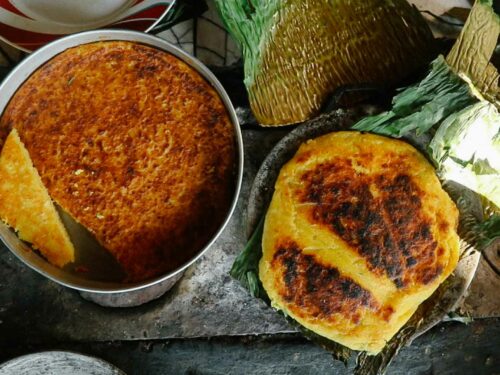
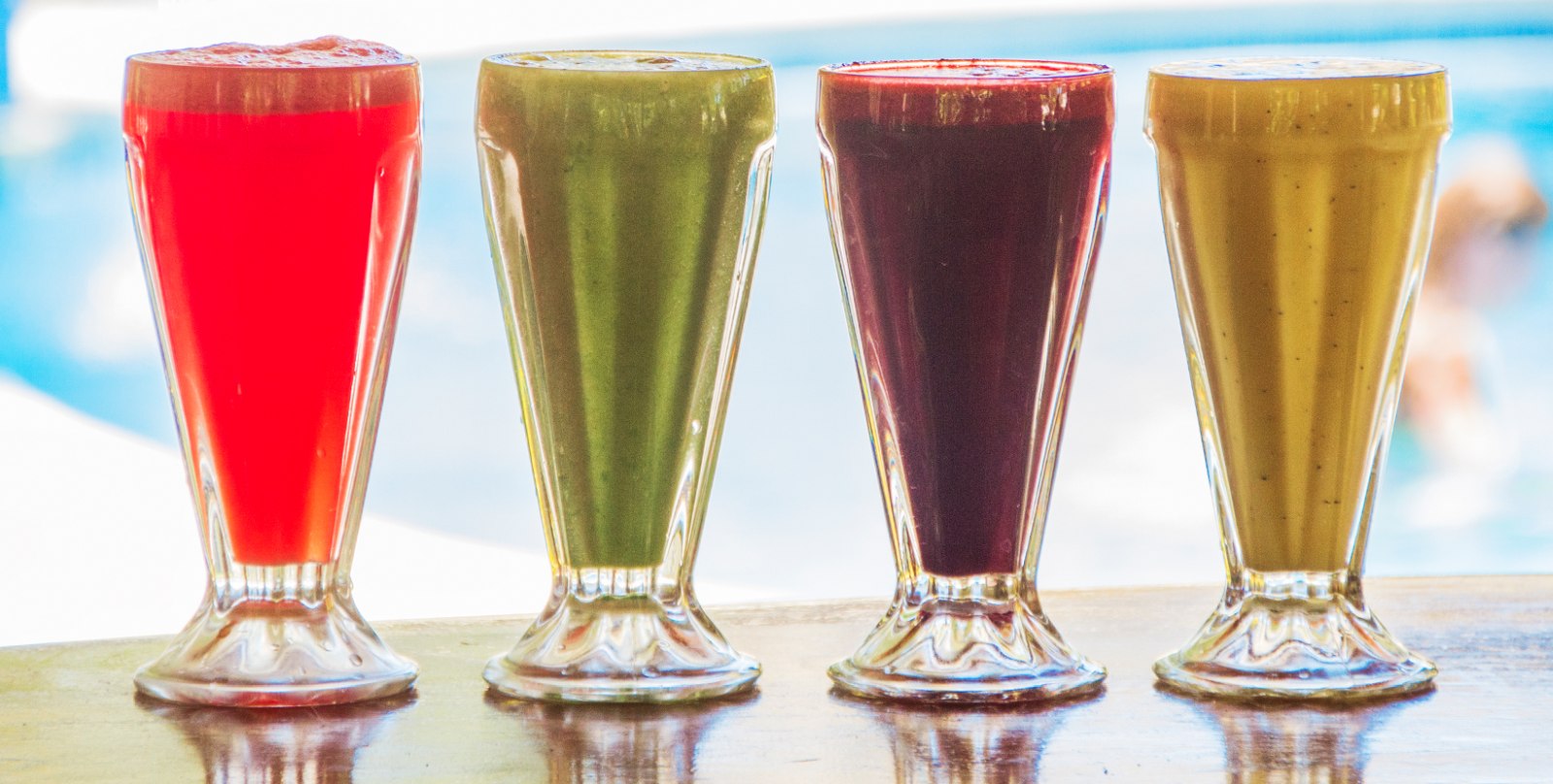

Comments